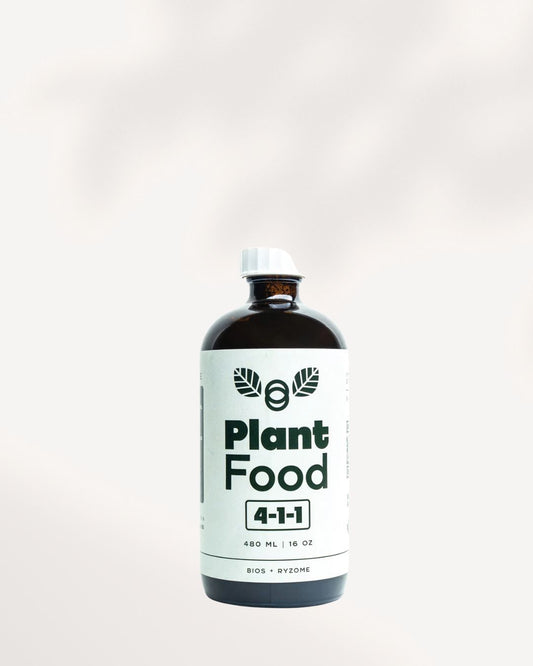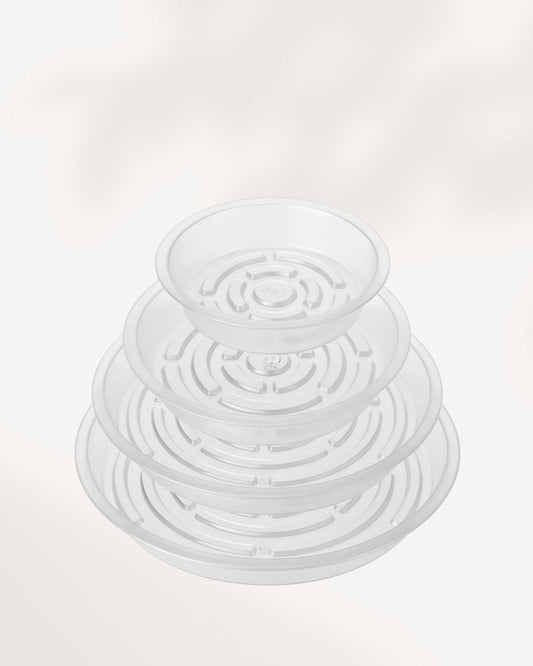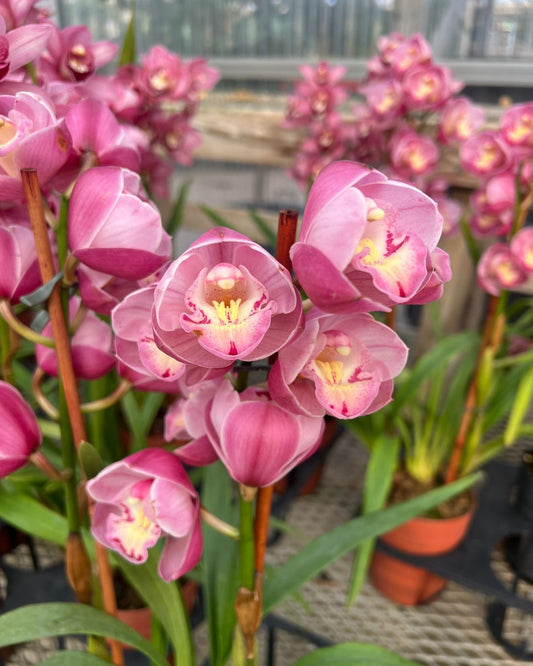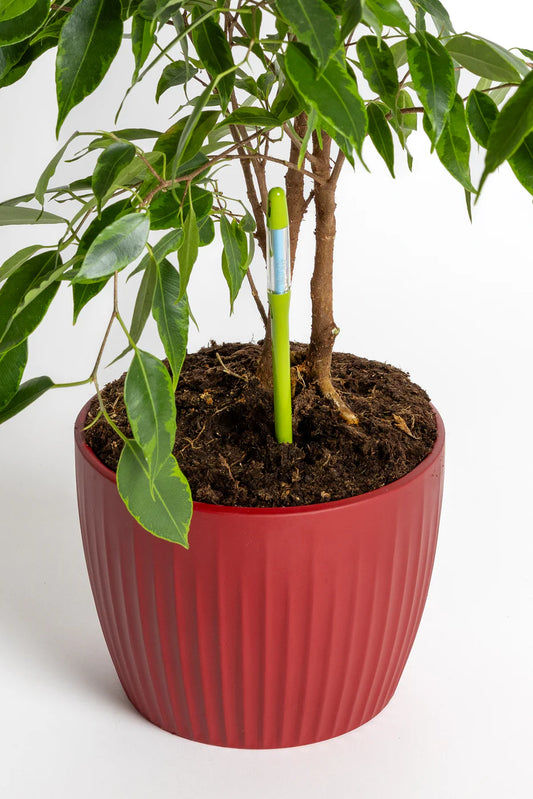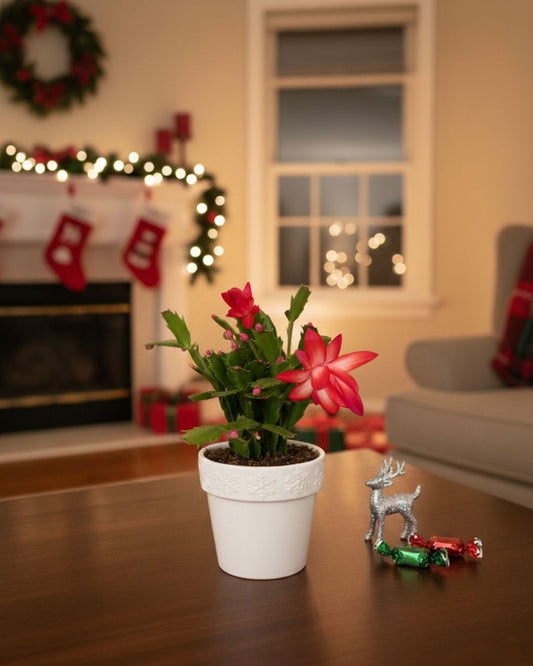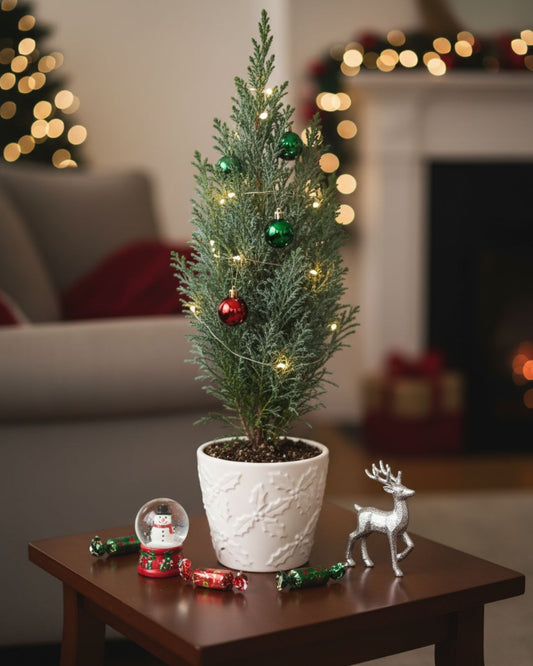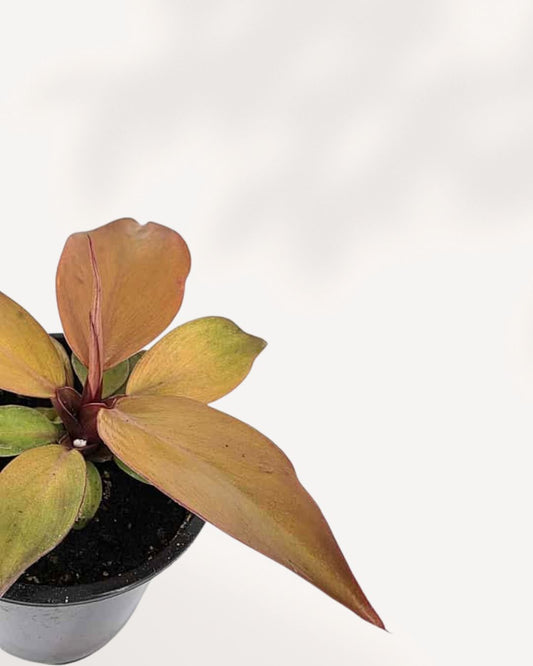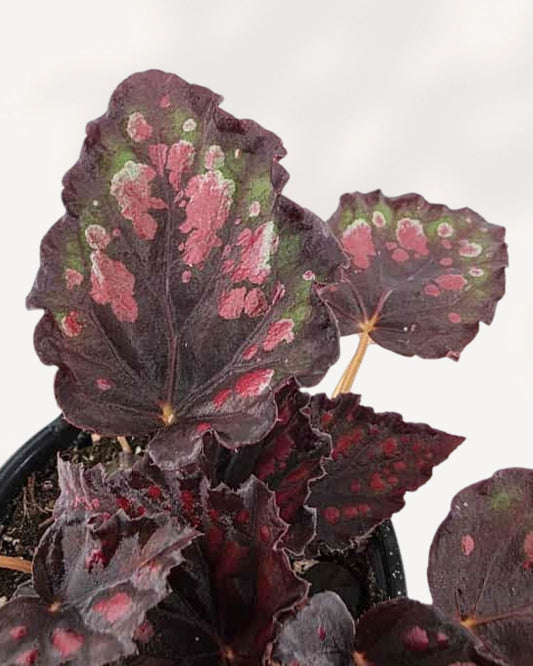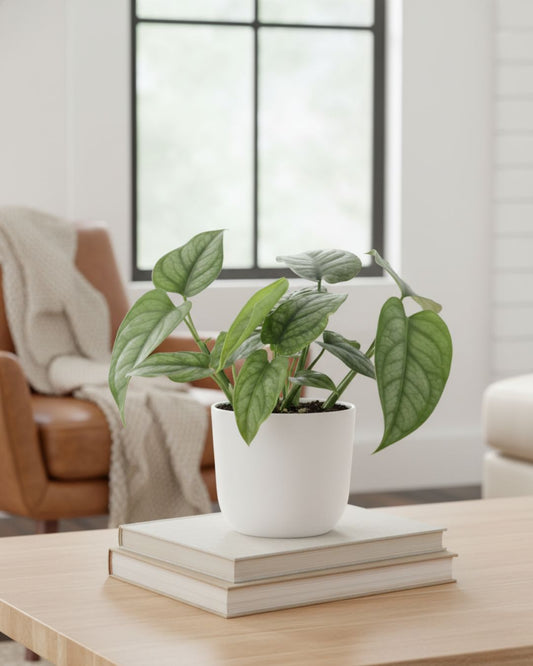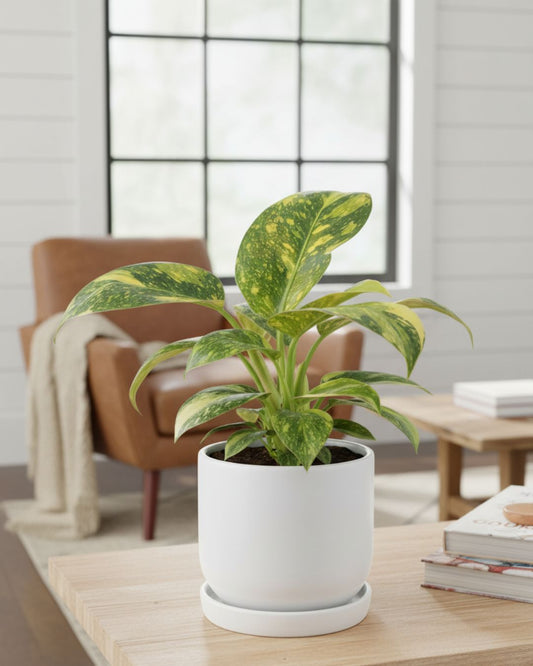Lemon Cypress Plant Care: The Best Guide for Beginners
Struggling to keep your Lemon Cypress plant healthy? You are not alone! These attractive and vibrant plants are a favourite for their beauty, but can be tricky to care for without the right guidance. If you're unsure about watering, sunlight, or proper maintenance, we've got you covered.
Our guide provides various tips and tricks for caring for Lemon Cypress plants. We’ll also discuss how to propagate this plant. Finally, we will cover how to address common issues that may arise when growing the Lemon Cypress plant. This article will help you become a confident plant parent in no time.
Now, let’s get started!
Part 1: How to Take Care of Lemon Cypress Plant?

The Lemon Cypress plant is considered a low-maintenance plant. With easy care, it can be grown both indoors and outdoors. Providing the right environment and care for your thriving Lemon Cypress plant is crucial. These are the important points to consider:
- Place the Lemon Cypress plant in as bright light as possible for optimal growth.
- Water the plant when the top inch of the soil feels dry.
- Use well-draining soil to avoid root rot.
- Use a balanced fertilizer during the growing season.
- Keep the plant in cool temperature between 20°F and 80°F.
Are you ready to grow your vibrant, lush plant? Before that, let’s give you an overview of the plant.
Overview of Lemon Cypress Plant
|
Characteristic |
Details |
|
Common Name |
Lemon Cypress Plant, Lemon Cypress Goldcrest |
|
Botanical Name |
Cupressus sempervirens 'Lemon' |
|
Family |
Cupressaceae |
|
Plant Type |
Evergreen conifer |
|
Mature Size |
10 feet tall; 3–5 feet wide |
|
Sun Exposure |
Full sun |
|
Soil Type |
Well-draining, sandy or loamy soil |
|
Soil pH |
6.5–7.5 (slightly acidic to neutral) |
|
Bloom Time |
Not applicable (produces small, inconspicuous cones in late fall to winter) |
|
Flower Color |
N/A (cones are brownish) |
|
Hardiness Zones |
USDA Zones 7–10 |
|
Native Area |
coastal regions of California |
Visit our Goldcrest Lemon Cypress product page for detailed information and care instructions. Now let’s move on to the care tips:
Care Tips:
Follow these care tips to create the ideal Lemon Cypress plant care environment.
1- Light:
The Lemon Cypress plant prefers as bright light as possible. You can put it outdoors in full to partial sun for at least 6-8 hours daily. In winter, place the plant on a windowsill to ensure it receives sufficient indirect light.
Explore our low-light plants and enjoy greenery even in less light.

Warning: Too little light can cause the plant to become weak and fragile.
2- Watering:
Keep the soil evenly moist, not too soggy or wet, and not dried out. This will help the plant thrive. Top it up with a little water twice a week. Always check the soil moisture level before watering again. You can do a finger test to ensure the level. Make sure not to overwater your Lemon Cypress plant. Overwatering can cause yellowing leaves and root rot. Reduce watering the plant in winter if the growth slows down.

Pro Tip: Regularly check the soil moisture level, as if the soil dries out too much, the leaves will crisp up in no time.
Explore our 3-in-1 moisture meter to get healthier plants effortlessly.
3- Soil:
Use well-draining soil. It can be loamy, sandy, or chalky. The soil should have good drainage. Use a mixture of regular potting soil and sand or perlite. Avoid using very rich soils, as they can retain excess moisture.
Check out our selection of well-draining soil and fertilizer to ensure optimal growth.
4- Temperature and Humidity:
The Lemon Cypress plant prefers cool and moist weather. Ideally, the temperature should be between 20°F and 80°F (-6.67°C and 26.67°C). Protect your Lemon Cypress plant from extreme heat and cold. Lemon Cypress benefits from moderate humidity levels. If your air is very dry, use a humidifier or mist the leaves regularly to maintain the humidity levels.
Improve your indoor space with our selection of air-purifying plants.
5- Fertilizer:
A standard, slow-release like 20-20-20 fertilizer during spring and summer before new growth. Feed every 4-6 weeks. There is no need to fertilize in cold weather.
Note: Lemon Cypress plants grow well without fertilizer.
6- Pruning:
Trim off any dead or damaged leaves; brown or brittle areas also indicate trimming. Pruning can provide a natural form to your Lemon Cypress plant if it has a poor shape or uneven growth. The best pruning times are spring and fall.
That’s everything you need to know about taking care of your Lemon Cypress plant. Follow these tips to ensure a healthy and happy plant: Provide it with significant light and keep it well-watered.
Read our dedicated guide on Majesty Palm Care for more tips on outdoor plant care.
Part 2: How to Propagate Lemon Cypress Plant?
Propagating a Lemon Cypress plant is a great way to multiply and enjoy these lovely, beautiful, fragrant plants. This process involves growing new plants from the cuttings of an existing plant. You can make as many as you want if you know how to propagate them. Once created, you can gift these vibrant plants to your friends and family.
There are two main methods for propagating Lemon Cypress plants: stem cuttings and seed collection. Stem cutting is the most popular and effective method for propagation. On the other hand, seed collection takes longer and requires more patience.
Now, let’s explore the steps for successful propagation.
Step-by-Step Guide:
Step 1: First, look for disease-free semi-hardwood stems with healthy leaves. Once a stem is selected, cut it to a length of about 4-6 inches.

Pro Tip: Use a sharp and clean pair of scissors, as hygiene is the key.
Step 2: Once cut, remove a few leaves from the bottom of the stem. If we don’t remove the leaves, the stem will completely dry out, losing its moisture.

Note: The optimal time for taking cuttings is spring or summer.
Step 3: Then, at a 45-degree angle, make a clean cut at the end of the stem. After that, dip the cut end into the rooting hormone. This step will be a game-changer in your propagation process. It will speed up root development and success rates.

Step 4: Fill a small pot with a well-draining potting mix. Make a hole in the soil mix and add the stem to it.

Explore our wide range of pots, which feature excellent drainage and are perfect for repotting.
Step 5: Place a plastic bag over the pot and adjust it properly so that it does not touch the cutting surface. This will provide high humidity to the cutting.

Pro Tip: Make a few holes in the plastic bag to avoid mold.
Step 6: Place the pot in bright, indirect light, away from direct sunlight.

Step 7: Gently water the soil to keep it moist. Remember to keep the soil moist, not soggy.

Step 8: Gently pull the stem to see if it has grown strong roots. If yes, remove the plastic bag, and transplant the plant into a larger pot. Then, place this pot in a sunny spot, and let the plant grow.

Pro Tip: Don’t immediately place the plant in direct sunlight. Take a few days or a week to avoid transplant shock.
Propagating From Seeds
Collect the mature cones in summer to propagate the Lemon Cypress plant. Then harvest the seeds from these cones. Clean the seeds and allow them to dry for a few days. Then, soak them in water for 24 hours and plant them ¼ inch deep in a well-draining seed tray. Ensure proper moisture and keep these seedlings in bright and indirect light. Wait until these grow 2-3 sets of real leaves. Then, move them to a new spot and plant them 12-18 inches apart, allowing them to grow well.
Check out our essential garden tools to make your garden thrive and stay healthy.
Potting and Repotting Lemon Cypress Plant
|
Aspect |
Potting |
Repotting |
|
Soil Selection |
Use well-draining soil, preferably a mix of potting soil, sand, and perlite. |
Refresh soil during repotting to maintain aeration and nutrient availability. |
|
Pot Type |
Choose a container with drainage holes to prevent excess moisture buildup. |
Select a pot 1–2 inches larger in diameter to allow root expansion. |
|
Timing |
Best potted in early spring or summer for healthy root establishment. |
Repot every 2–3 years or when roots start circling inside the pot. |
|
Method |
Fill the pot with soil, position the plant upright, and lightly firm the soil around the roots. |
Gently remove the plant, shake off old soil, trim damaged roots, and replant in fresh soil. |
|
Watering |
Water immediately after potting to help roots settle, ensuring the soil remains slightly moist. |
Water thoroughly after repotting, then adjust to a regular schedule based on soil dryness. |
|
Root Health |
Avoid burying the roots too deep, which can lead to rot. |
Inspect roots for rot or damage, trimming any unhealthy parts before repotting. |
|
Aftercare |
Keep in bright, indirect sunlight and maintain consistent watering. |
Place in a stable environment, avoiding extreme temperatures, and monitor for stress signs like drooping. |
Are you a pet owner looking for safe, low-light indoor plant options? This guide is for you.
Give Your Home a Green Touch & Enjoy Upto 20% Discounts!
View CollectionPart 3: What are the Common Problems of the Lemon Cypress Plant?
Lemon Cypress plants are relatively easy to care for, but can encounter common issues due to environmental stress, improper watering, or inadequate light conditions. Identifying these problems early and addressing them with the right solutions can help maintain a healthy and vibrant plant.
Below are some of the most frequent issues with the Lemon Cypress plant, their causes, and how to resolve them.
Issue 1: Browning or Drying Leaves
Causes:
- Inconsistent watering, leading to dehydration
- Low humidity levels, especially in dry indoor environments
- Excessive exposure to direct sunlight
Solutions:
- Water consistently, allowing the top inch or two of soil to dry slightly between waterings.
- Increase humidity with a humidifier or pebble tray. Misting can help slightly but is often insufficient.
- Provide bright, indirect light and avoid prolonged exposure to intense sun.
Issue 2: Yellowing Leaves
Causes:
- Overwatering, leading to root rot
- Poor drainage or compacted soil
- Sudden temperature fluctuations
Solutions:
- Allow the top inch or two of soil to dry between waterings.
- Ensure the pot has proper drainage holes and use well-draining soil.
- Keep the plant away from drafts, heaters, or air conditioning vents.
Check out this complete water quality guide to discover the best water for your plants!
Issue 3: Leggy or Sparse Growth
Causes:
- Insufficient light exposure
- Lack of regular pruning
- Over-fertilization causes weak, elongated growth
Solutions:
- Move the plant to a location with more indirect light or partial sunlight.
- Trim the tips occasionally to encourage bushier growth.
- Use a balanced, diluted fertilizer only during the growing season.
Read our Indoor Plant Fertilizer Buying Guide 2025 to pick the right fertilizer for your plants.
Issue 4: Root Rot
Causes:
- Consistently waterlogged soil
- Poor air circulation in the root zone
- Using a pot without drainage holes
Solutions:
- Reduce watering and ensure the soil dries slightly before the next watering.
- Repot with fresh, well-draining soil and trim off affected roots.
- Always use a pot with drainage holes to prevent excess moisture retention.
Issue 5: Pest Infestation (Spider Mites, Aphids, or Scale)
Causes:
- Dry indoor air makes the plant more susceptible to pests
- Lack of regular cleaning of leaves
- Infestation from nearby plants
Solutions:
- Increase humidity and mist the plant occasionally to deter pests.
- Wipe leaves with a damp cloth or use insecticidal soap if needed.
- Isolate infested plants immediately and treat them with neem oil or an organic pesticide.
Don’t forget to visit our guide on the best indoor plants to bring life to your space.
Conclusion
The final remarks are that a Lemon Cypress plant may face issues such as browning or yellowing of leaves, slow growth, or pest infestations. But no worries, these can be managed with the right care. Ensure proper watering, enough bright sunlight, and check regularly for any pests to address infestations early. This attractive plant is low-maintenance and requires easy care. Moreover, you can enjoy a beautiful small garden using the stem cutting process.
Follow the tips and instructions in this guide to keep your Lemon Cypress plant happy and flourishing!! Moreover, browse our pet-friendly plant collection for safe options.
Frequently Asked Questions
Do Lemon Cypress Plants Smell Like Lemons?
Yes, touching or crushing the Lemon Cypress's thin leaves releases a light, lemony scent. It makes the Lemon Cypress plant not only visually attractive but also fragrant.
Is the Lemon Cypress Tree Considered a Christmas Tree?
The bright yellow-green color of the needles makes the Lemon Cypress a popular choice for holiday decor. However, it is usually small in size. Therefore, it cannot support hanging decorations and ornaments commonly used on other Christmas trees.
Can the Lemon Cypress Plant Be Kept Indoors or Outdoors?
Lemon Cypress is a great houseplant that can be kept indoors or outdoors. Follow the care instructions to keep the plant thriving and healthy. Avoid placing it in extreme sunlight, as it can cause damage. Moreover, in winter, keep it inside to prevent frostbite.
Why Are My Lemon Cypress Leaves Turning Yellow?
Giving excessive water to your Lemon Cypress plant can cause the leaves to yellow. It can even cause root rot and mushy stems.
How Tall Can a Lemon Cypress Tree Grow?
Lemon Cypress trees come in both smaller and larger varieties. The large outdoor cypress can grow up to 16 feet tall, while the smaller one can reach up to 3 feet in length. Therefore, it is ideal to keep the smaller Lemon Cypress plant inside.
The Positive Impact of Plants
-
Plants and Healing
Working with plants soothes the mind. It feels calming and healing, offering a peaceful break from daily life.
-
Plants for Recovery
Being around plants can speed up healing from sickness, making you feel better quicker in a natural way.
-
Plants and Work
Plants in your space may make your work better and faster, enhancing focus and creativity during tasks.
LETTING CUSTOMERS SPEAK FOR US!
Shop by Feature
FAQs for Plant Delivery in Ontario & Quebec
What types of house plants do you offer for delivery.
We offer a wide variety of houseplants for delivery. Here are some of the popular options: Aglaonema, Alocasia, Calathea, Hoya, Monstera, Palm, Peperomia, Philodendron, Pothos, Sansevieria Snake, Syngonium, Tradescantia.
What is the lifetime support?
All plants purchased from our store or through our workshops come with lifetime support. This means that whenever you have questions or concerns about your plant, we're here to help. Whether you're unsure about your plant's health or need advice, we can assist in identifying problems, answering your questions, and potentially saving your plant. Feel free to reach out to us on Instagram @mygreenscapeto or via email at support@mygreenscape.ca.
Where do Mygreenscape plants come from?
Our plants embark on a journey from various greenhouses across Canada. We prioritize short delivery routes to ensure your plant arrives happy, healthy, and full of vitality.
Do I have to repot my plants once they arrive?
Absolutely not! When your plant arrives, give it time to settle into its new home. Place it in the desired spot, and let it acclimate for about two weeks.
Favorite in our plant shop
-
Liquid Plant Fertilizer
Regular price From $30Regular priceUnit price per -
Plant Saucer
Regular price From $2Regular priceUnit price per -
Cymbidium Orchid
Regular price $89Regular priceUnit price per -
SUStee Soil Moisture Indicators
Regular price From $12Regular priceUnit price per -
Christmas Cactus
Regular price $12Regular priceUnit price per -
Ellwoodii Cypress
Regular price $18Regular priceUnit price per -
Philodendron 'McColley's Finale'
Regular price $15Regular priceUnit price per -
Begonia Rex 'Harmony Stained Glass'
Regular price $15Regular priceUnit price per -
Monstera Siltepecana
Regular price $15Regular priceUnit price per -
Philodendron Green Congo Nuclear
Regular price $45Regular priceUnit price per -
Nepenthes Sanguinea Pitcher Plant
Regular price $35Regular priceUnit price per -
Cobra Fern
Regular price $18Regular priceUnit price per
MyGreenScape is your go-to online shop for indoor plants in cities Ontario or Quebec, including Toronto, Montreal, and many more. Our mission is to add joy to your home, one leaf at a time. Explore our range of beautiful, air-cleaning plants from the comfort of your home. You can find beautiful indoor plants, pots for plants, garden tools, and hanging basket plants all in one spot. Our mission is to add joy to your home, one leaf at a time.
Buying plants online with us means no more carrying heavy pots or figuring out how to get big plants home. We deliver straight from the gardener to you, with eco-friendly packaging, across Ontario and Quebec. Expect your new green friends within 2-7 days.
Why choose MyGreenScape? Here’s why:
- Lifetime Support: We’re here for you always. Get all the help you need for your plants to flourish.
- 30-Day Happy Plant Guarantee: Not happy with your plant? Tell us within 30 days, and we’ll fix it.
- Easy Delivery: Fast, direct to your doorstep in Ontario or Quebec.
Hear from a happy customer, Sarah T.: "Buying plants was never easier. Quick, simple, and with great support from MyGreenscape."
Ready for easy, stress-free plant shopping? Visit us now and make your home greener. Join MyGreenScape for a hassle-free way to bring nature inside.










 Goldcrest Lemon Cypress
Goldcrest Lemon Cypress  Hoya Kerrii Heart
Hoya Kerrii Heart 








